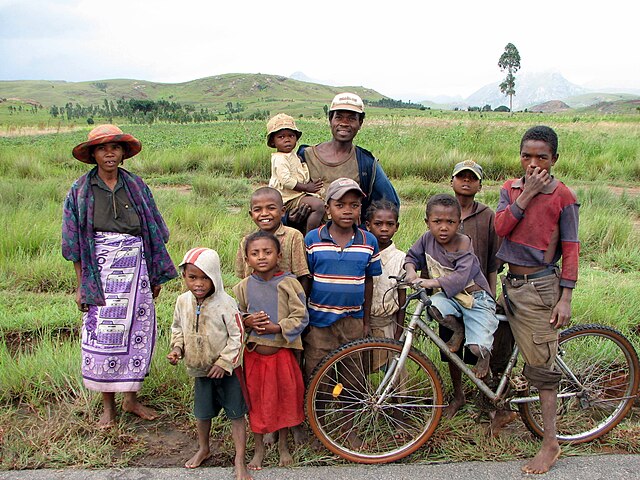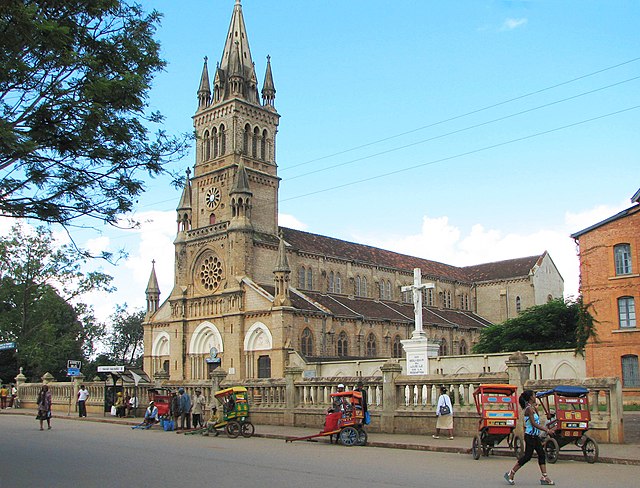The Betsimisaraka are the second largest ethnic group in Madagascar after the Merina and make up approximately fifteen percent of the Malagasy people. They occupy a large stretch of the eastern coastal region of Madagascar, from Mananjary in the south to Antalaha in the north. The Betsimisaraka have a long history of extensive interaction with European seafarers, pirates and bourgeois traders, which produced a significant subset with mixed European-Malagasy origins, termed the zana-malata. European influence is evident in the local valse (waltz) and basesa musical genres, which are typically performed on the accordion. Tromba ceremonies feature strongly in Betsimisaraka culture.
Betsimisaraka women
Ratsimilaho ruled the united Betsimisaraka from his capital at modern day Foulpointe.
A pirate cemetery at Nosy Boraha. The zana-malata subset of the Betsimisaraka traced their heritage back to intermarriage between European pirates and Betsimisaraka women.
A Betsimisarakian hen house and a rice barn in 1911, Fenerive. Photo by Walter Kaudern.
Demographics of Madagascar
Demographic features of the population of Madagascar include population density, ethnicity, education level, health of the populace, economic status, religious affiliations and other aspects of the population.
Many rural regions of Madagascar have high birthrates
Roman Catholic cathedral in Antsirabe.






